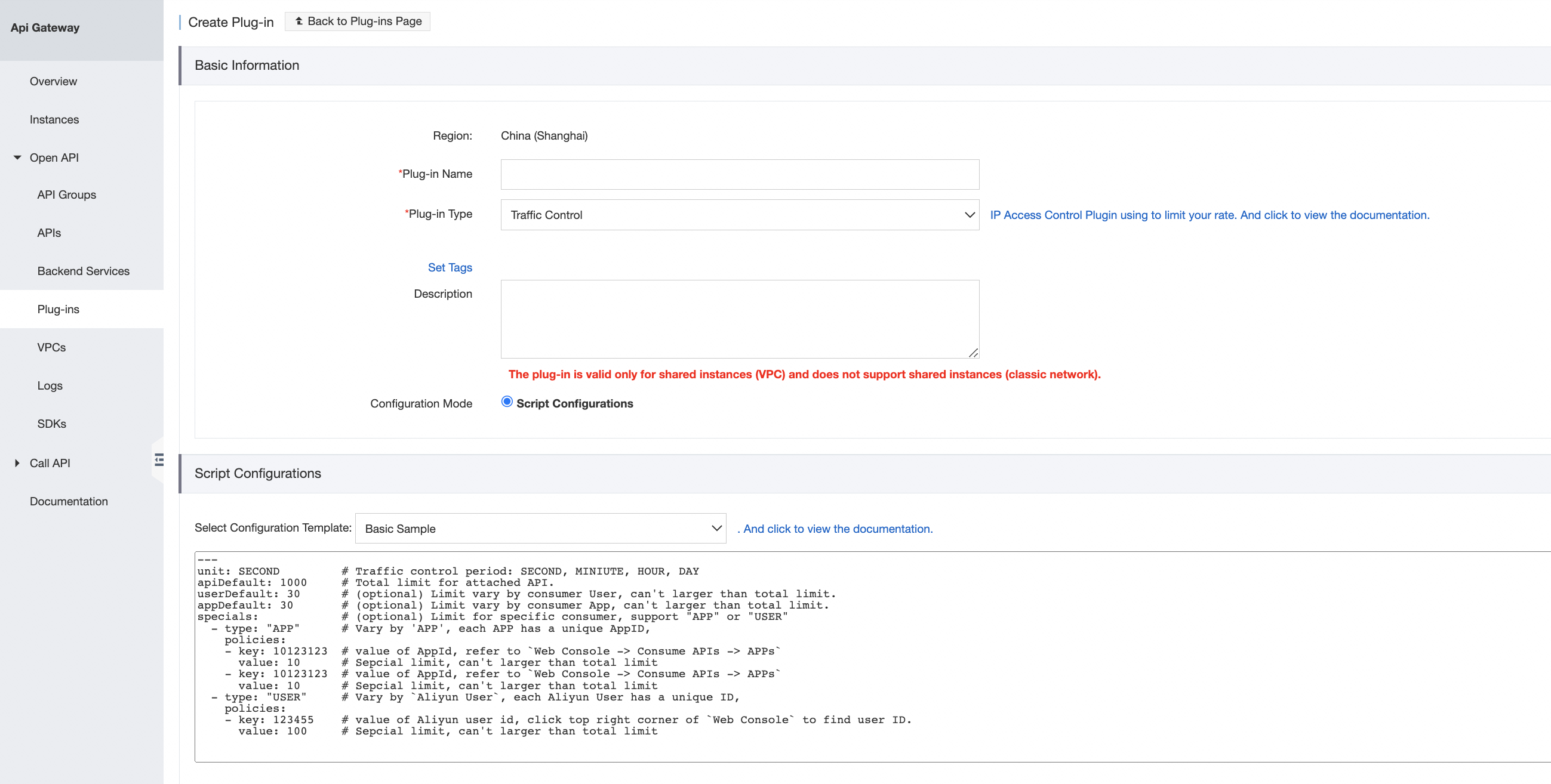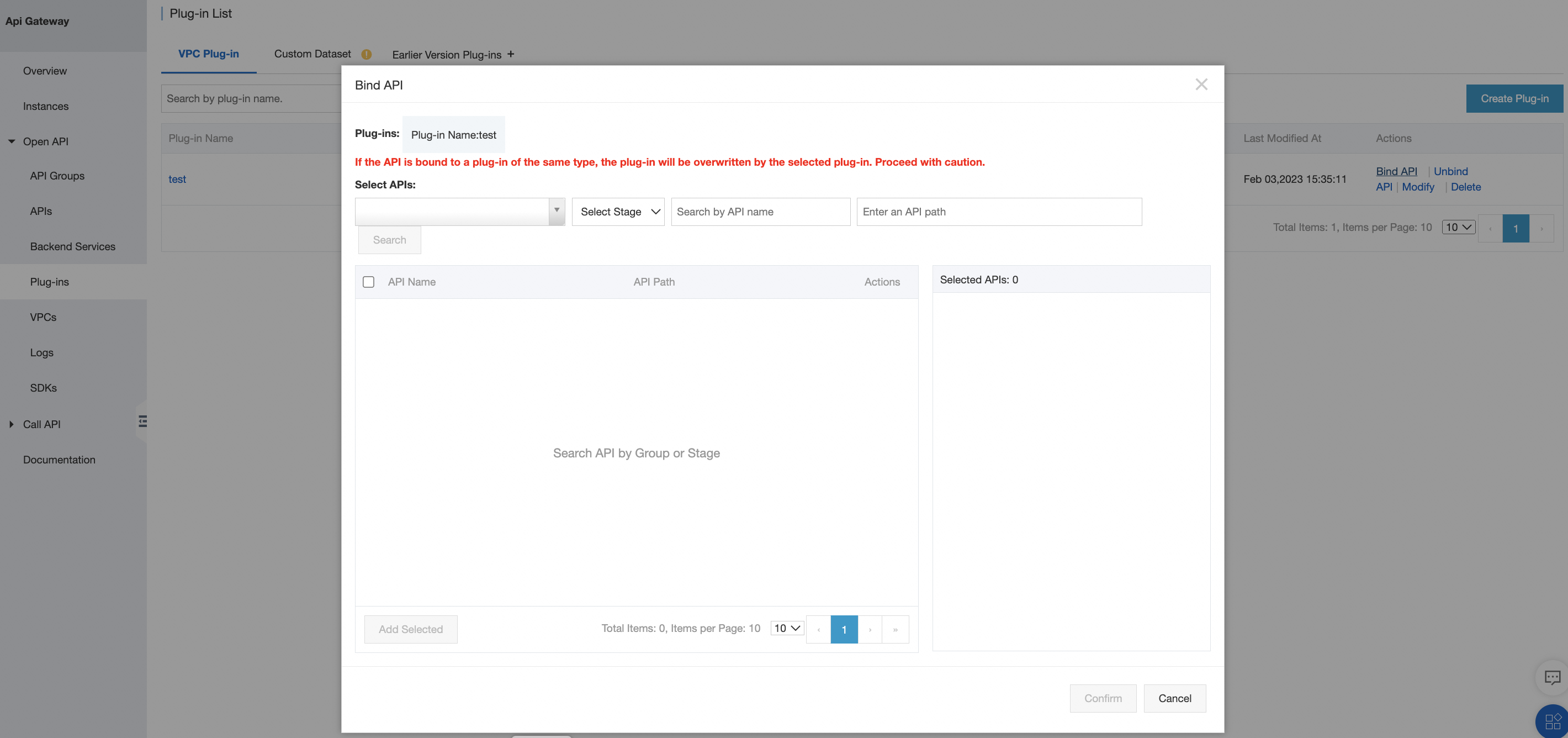1. Usage notes
For each type of plug-in, only one plug-in of such type can be bound to an API.
You can bind a plug-in only to an API that is in the same region as the plug-in. Each user can create a maximum of 1000 plug-ins in each region.
Plug-in policies and APIs are separately managed. A plug-in policy takes effect only after you call the AttachPlugin operation to bind the plug-in to an API in a specified environment.
Before you bind a plug-in to an API, you must publish the API.
The binding, unbinding, and update of a plug-in take effect immediately. You do not need to re-publish an API. We recommend that you first test APIs that may pose high security risks.
If you unpublish an API, the bound plug-in is unbound. If you require the plug-in when you republish the API, you must bind the plug-in again.
If a plug-in is bound to a published API or an API that is unpublished but not deleted, you cannot delete the plug-in.
2. Plug-ins supported by API Gateway
This section provides links to references about the plug-in types supported by API Gateway.
Plug-ins of the Circuit Breaker type (available only for APIs on dedicated instances)
Third-party authentication plug-ins (available only for dedicated instances)
3. Quick start
Log on to the API Gateway console. In the left-side navigation pane, choose Open API > Plug-ins.

On the Plug-in List page, click Create Plug-in. On the Create Plug-in page, follow the on-screen instructions to configure the parameters and click Create.

After you create a plug-in, the plug-in appears on the Plug-in List page. Find the plug-in and click Bind API in the Actions column.

The plug-in takes effect immediately after you bind it to an API.
4. API reference
You can call the following API operations to manage plug-ins in API Gateway:
CreatePlugin: creates a plug-in.
ModifyPlugin: modifies a plug-in.
DeletePlugin: deletes a plug-in.
DescribePlugins: queries a plug-in.
AttachPlugin: binds a plug-in to an API.
DetachPlugin: unbinds a plug-in from an API.
DescribePluginApis: queries the APIs to which a plug-in is bound.
DescirbePluginsByApi: queries the plug-ins that are bound to an API.
5. Limits
The metadata of a plug-in cannot exceed 50 KB in size.
Each Alibaba Cloud account can create a maximum of 1000 plug-ins in each region. Plug-ins created by the Resource Access Management (RAM) users that belong to the Alibaba Cloud account are counted against this quota.
The API debugging feature in the API Gateway console does not support plug-ins of the JWT authentication type. We recommend that you use Postman or run the curl command in the command-line interface (CLI) to debug the APIs to which JWT authentication plug-ins are bound.